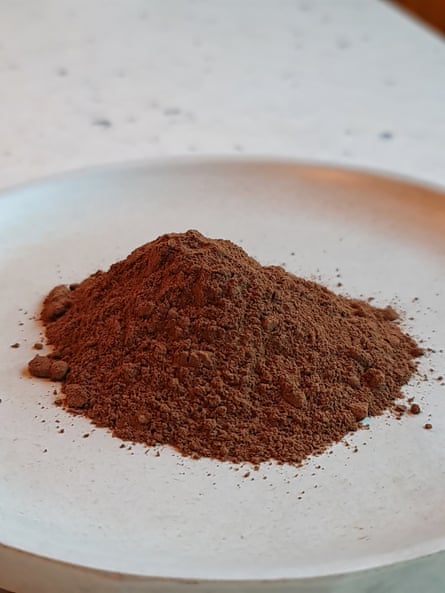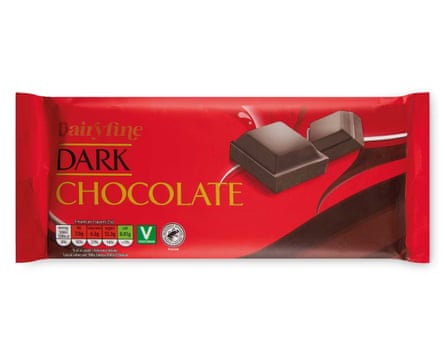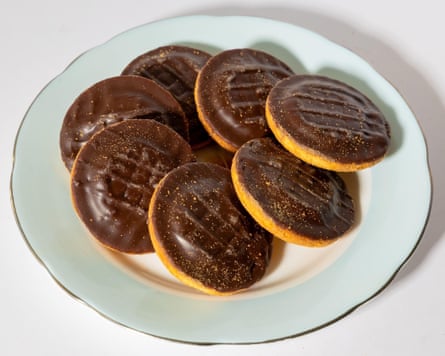Rice is not the first ingredient most people associate with confectionery and desserts, but a UK company is using it to create cocoa-free chocolate.
It is part of an emerging trend in which chocolate makers are exploring alternative ingredients and new technologies to make their products more sustainable and reduce reliance on conventional cacao beans.
Rising costs have also had an impact with some brands turning to “chocolate flavouring” and altering their recipes, seeking cheaper ways to keep products on store shelves. McVitie’s Penguin and Club bars, along with KitKat White and McVitie’s White Digestives, can no longer be marketed as chocolate because they do not contain enough cocoa.
The climate crisis and deforestation have made cacao production increasingly unstable and environmentally costly. At the same time, global demand for chocolate continues to rise, putting further pressure on supply chains.
“If you’re a company using chocolate today, you’re in crisis. Prices have more than quadrupled in three years. For some small businesses, that can be the difference between surviving or not,” said Mark Golder, the chief executive of cocoa-free chocolate maker Win-Win.
Golder’s company is creating chocolate alternatives. Instead of relying on traditional cacao beans, it uses fermented cereals and legumes, including rice, to replicate the taste, texture and melt of real chocolate. Its process mirrors conventional chocolate-making, involving steps such as fermentation and roasting.
There has been more interest in alternatives to chocolate as prices rise, according to Golder. “There’s been an explosion in interest over the last 18 months. We’re getting inbound inquiries all the time from customers across Europe and further afield,” he said.
“The world loves chocolate, but cacao trees are suffering. Climate change is reducing yields year after year, and about 75% of the world’s cocoa comes from Ghana and Ivory Coast, where deforestation and child labour remain serious issues.”

Golder said rice was the base ingredient which, he said, “surprises people”. He said that through fermentation his company could develop the “complex flavour profile of chocolate”.
He said: “We then combine the fermented base with other ingredients [carob, fats and sugars] and use conventional chocolate-making processes. The end product looks, tastes and melts just like chocolate.”
Others are also experimenting with new ways to make chocolate. The Swiss chocolate manufacturer Barry Callebaut has partnered with Zurich University of Applied Sciences to explore cell-cultured chocolate, which is made by growing cacao plant cells in a lab. The cells produce the same flavours and fats as real chocolate, but without needing cacao trees.
Germany’s Planet A Foods, the company behind the ChoViva brand, uses oats and sunflower seeds that are roasted and fermented to recreate the taste and texture of chocolate without any cocoa. Planet A says its process produces up to 90% less carbon emissions and uses 90% less water than conventional chocolate. The company has already partnered with major food producers, including Aldi and Lidl, and has scaled up production to more than 10,000 tonnes a year as demand grows across Europe.
In the US, a California startup, Voyage Foods, has developed a product made from grape seeds, sunflower protein and shea butter. Voyage Foods has raised over $40m in investment to scale its operations and supply manufacturers.
Prof Tim Spector, the co-founder of UK-based health and nutrition company Zoe, said: “Chocolate alternatives made without cocoa, including lab-grown varieties, form part of a wider, fascinating emerging field of food innovation that’s better for the planet. For example, ChoViva ferments sunflower seeds to mimic the flavour and aroma of cacao, which is genuinely exciting.”
However, he added: “When it comes to nutrition, a new process doesn’t automatically translate into a healthier product. We understand that the fat in chocolate, though saturated fat, is actually beneficial for us when consumed as a piece of dark chocolate, for example.
At the moment we don’t know whether these new ‘chocolate-like’ creations will have the same beneficial health impact. Minimally processed cacao is rich in bioactive compounds such as flavanols that are very good for our gut health, blood pressure and heart health.”
Dark chocolate and raw cacao powder are “genuinely healthy foods to include in your diet”, Spector added, but he cautioned that consumers should be careful of thinking that “cocoa-free or lab-grown automatically means better in every sense”.
“These new types of chocolate are great for the environment, but the best option for your health remains really high-quality dark chocolate with good manufacturing practices behind it.”
I should cocoa: treats ranked by cocoa content
Confectionery fans were left with a bitter taste in their mouths this week after discovering that packed lunch classics McVitie’s Penguin and Club bars are no longer real chocolate, with their coatings downgraded to “chocolate flavour”.
The biscuits can no longer be classified as chocolate because they now contain more palm and shea oils than cocoa. The classic treats quietly changed their recipe earlier this year as ingredient costs rose and manufacturers looked for cheaper ways to keep them on the shelves.
The price of chocolate for shoppers climbed 15.4% in the year to August, according to the latest cost of living snapshot. Cocoa prices have more than doubled over the past two years due to poor harvests in west Africa, including Ghana and Ivory Coast, placing sustained pressure on manufacturers.
So which brands contain the highest levels of cocoa, and which fall closer to the minimum required? Below we have ranked a selection of popular chocolate bars according to their cocoa content, from dark to milk chocolate, based on manufacturer information and UK legal definitions.
Green & Black’s Organic 85% dark chocolate bar
Green & Black’s dark chocolate bar contains 85% cocoa solids, more than meeting UK regulations for dark chocolate, which require a minimum of 35%. A 90g bar typically costs £2.75 and is certified organic and Fairtrade. Other bars in this category include Montezuma’s Lordy Lord Cocoa Nibs dark chocolate bars, with 70% cocoa solids, which are marketed as premium dark chocolates.
Aldi Dairyfine dark chocolate bar
The Aldi Dairyfine dark chocolate bar contains 55% cocoa solids and is sold in a 200g bar for £1.85. It has cocoa paste, cocoa butter and emulsifiers, placing it above the legal minimum for dark chocolate.

Hotel Chocolat Milk Chocolate Slab
The Hotel Chocolat Milk Chocolate Slab contains 40% cocoa solids, weighs 100g and is priced at £5.45. The company emphasises its higher cocoa amounts in its advertising, saying on its website it “is made from 40% cocoa, whilst most other premium milk chocolates have a cocoa content in the 30s”.
Tony’s Chocolonely milk chocolate bar
The 180g Tony’s Chocolonely milk chocolate bar contains 32% cocoa solids, above the UK legal minimum for milk chocolate (25% dry cocoa solids and 14% dry milk solids). It typically retails for £4.50. The company’s chief executive, Douglas Lamont, has previously spoken about the fact that prices will have to rise if the cost of cocoa continues to increase.
Cadbury Dairy Milk
According to a 2024 survey by the Grocer magazine, Cadbury Dairy Milk holds the No 1 spot among the UK’s favourite chocolate brands. A 95g Cadbury Dairy Milk bar contains 20% cocoa solids, meeting the UK legal minimum for milk chocolate. It retails for approximately £1.45 and contains milk solids, sugar, cocoa butter, cocoa mass and emulsifiers.
McVitie’s chocolate biscuits
The dark chocolate digestives contain 30% dark chocolate, which includes cocoa mass and cocoa butter. This is relatively high compared with other mass-market biscuits. A 226g pack costs approximately £2.25.
Jaffa Cakes
When it comes to biscuits, the longstanding debate over whether Jaffa Cakes – also made by McVitie’s – are a biscuit or a cake still persists. Regardless of where you stand, their official ingredient list shows they contain 19% dark chocolate (which is made up of cocoa, sugar and other ingredients), placing them at the lower end of the cocoa content scale among chocolate biscuits. They do not specify how much of the dark chocolate is pure cocoa. A pack of 10 is about £1.25.

Oreo biscuits
Oreo cookies are made with Dutch-processed cocoa powder, which is treated to neutralise its acidity, resulting in a milder flavour and darker colour. The chocolate wafer portion of an Oreo cookie contains approximately 4.5% cocoa powder. This powder is a product made from cocoa solids, with most of the fat removed, typically used in baking and cooking. A 154g pack is priced at £1.30.
Wagon Wheels
Another brand to use chocolate flavouring is Wagon Wheels, with their 24% chocolate-flavoured coating, which includes fat-reduced cocoa powder. Due to the low cocoa content, they no longer meet the legal definition of “chocolate” in the UK. A pack of six costs £1.35.

 1 month ago
27
1 month ago
27

















































